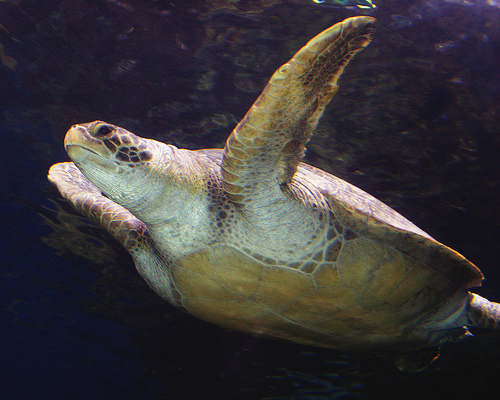
Ralphs
Discount tickets available at Ralphs for a limited time
Seahorses and seadragons, as well as pipefish and ribbonfish, are all in the family Syngnathidae, which contains more than 200 species.
The word Syngnathidae comes from the Greek words syn, meaning fused or together, and gnathus, meaning jaws. All syngnathids have fused jaws, as well as other common characteristics: They have rigid bodies and swim by rapidly fluttering their fins, males incubate the eggs and hatch the young, and they live in temperate and tropical waters. Seahorses tend to live between three to five years, while seadragons typically have lifespans of five to seven years.
Only three official species of seadragon have been discovered: the leafy, weedy, and ruby seadragon, which was only just discovered in 2015. Seadragons are found only in the ocean waters off the southern and western coasts of Australia. They inhabit temperate coastal waters where there are rocky reefs, sand patches, seaweed beds, and seagrass meadows. Seahorses, however, are much more widespread. They are found all over the world in tropical and temperate shallow waters.
Seahorses are fish, with a bony spine, gills, and swim bladder. They also have rigid bony plates covering their bodies and prehensile tails that they use to grasp and anchor themselves to seagrass or coral on the seafloor. They use dorsal and pectoral fins for locomotion. Seahorses beat their fins up to forty times a second—too fast to be visible to the human eye. Most syngnathids stay close to their home habitat, not being very strong swimmers. However, since they can be carried by strong currents or drift with floating ocean debris, some end up miles from their birthplace. There is one exception: Pot-bellied seahorses sometimes swim hundreds of yards during the course of a day.
Seadragons grow to a maximum length of about 18 inches. Like seahorses, the outer skin of seadragons is solid, limiting their mobility. They swim through the water by rapidly oscillating their small, almost translucent fins and using their tails as rudders.
Adaptations that help syngnathids evade predators and find prey include their ability to change the color of their skin to blend in with the flora and fauna in their habitat. Their markings and appendages also contribute to their camouflage. In addition, their bony exterior might be a deterrent to some predators, as it makes them harder to swallow. Their eyes can move independently like a chameleon’s to help spot their prey.

Discount tickets available at Ralphs for a limited time